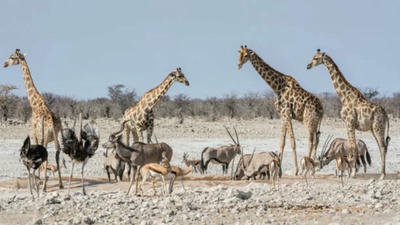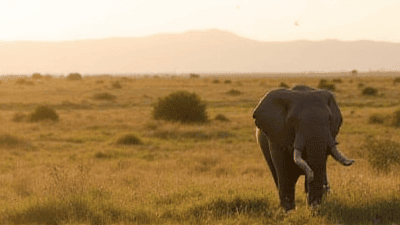
Wildlife safaris offer a thrilling opportunity to observe animals in their natural habitats, and for many nature enthusiasts, the desire to see rare species in the wild is a driving force behind their travel plans. From the vast savannas of Africa to the dense rainforests of South America, the world is filled with diverse ecosystems that support unique wildlife populations.
The Magic of Wildlife Safaris
A wildlife safari is more than just a trip; it is an immersive experience that allows individuals to connect with nature and learn about the ecosystems that sustain life on our planet. Safaris can take many forms, from traditional 4x4 game drives to walking safaris and boat excursions. Each type of safari offers a unique perspective on the wildlife and the environment.
Why Choose Wildlife Safaris?
-
Educational Experience: Wildlife safaris provide an opportunity to learn about animal behavior, conservation efforts, and the delicate balance of ecosystems.
-
Connection with Nature: Observing animals in the wild fosters a deeper appreciation for the natural world, encouraging a sense of responsibility toward conservation.
-
Adventure: The thrill of encountering rare animals in their natural habitat creates unforgettable memories and stories to share.
Best Wildlife Safari Destinations
When it comes to witnessing rare animals, certain destinations stand out for their biodiversity and the opportunities they offer for exceptional wildlife experiences. Here are some of the top locations worldwide for unforgettable wildlife safaris.
1. East Africa: The Serengeti and Ngorongoro Crater
Location: Tanzania
Rare Animals to Spot: African wild dogs, black rhinoceroses, and various migratory bird species.
The Serengeti National Park is iconic for its annual wildebeest migration, but it is also home to an array of unique wildlife. Visitors can witness the dramatic movement of animals across the plains while also searching for elusive species like the African wild dog, known for its intricate social structure and hunting strategies. The Ngorongoro Crater, a UNESCO World Heritage Site, is another excellent location for spotting the critically endangered black rhinoceros, as well as a diverse range of other wildlife within its caldera.
Tips for Your Safari:
- Spend at least a week in the area to maximize your chances of seeing diverse wildlife.
- Join guided tours led by experienced guides who can provide insights into animal behavior and ecology.
- Opt for a combination of game drives and walking safaris for a well-rounded experience.
2. Southern Africa: Okavango Delta and Chobe National Park
Location: Botswana
Rare Animals to Spot: African wild dogs, leopards, and the elusive Sitatunga antelope.
The Okavango Delta is a unique inland delta that transforms into a lush oasis during seasonal floods. The area is renowned for its rich biodiversity, including rare species like the Sitatunga antelope, which is adapted to semi-aquatic environments. Nearby, Chobe National Park is famous for its large elephant population and offers opportunities to see African wild dogs during their hunts.
Tips for Your Safari:
- Consider staying in a mokoro camp (traditional canoe) to explore waterways while observing wildlife from a unique perspective.
- Visit during the dry season (May to October) for the best chance of spotting wildlife congregating around waterholes.
3. Madagascar: A Unique Biodiversity Hotspot
Location: Madagascar
Rare Animals to Spot: Lemurs, fossa, and various endemic bird species.
Madagascar is a treasure trove of unique wildlife, with over 90 percent of its species found nowhere else on Earth. A visit to this island nation offers the chance to see rare species like lemurs, ranging from the charismatic ring-tailed lemur to the critically endangered Indri. The fossa, a carnivorous mammal akin to a small cougar, is another fascinating and elusive find for adventurous travelers.
Tips for Your Safari:
- Focus on visiting national parks like Andasibe-Mantadia and Ranomafana, which are known for their incredible biodiversity.
- Join guided night walks to spot nocturnal species, including various lemurs and frogs.
4. South America: The Amazon Rainforest
Location: Brazil, Peru, and Colombia
Rare Animals to Spot: Jaguars, Amazonian manatees, and scarlet macaws.
The Amazon Rainforest is often referred to as the lungs of the Earth, boasting unparalleled biodiversity. Wildlife enthusiasts can embark on riverboat safaris or guided treks through the jungle to observe rare animals. Jaguars, elusive and majestic, are a highlight for many visitors, alongside the opportunity to see unique bird species like the vibrant scarlet macaw and pink river dolphins.
Tips for Your Safari:
- Choose eco-lodges that practice sustainable tourism to lessen your environmental impact.
- Opt for small-group tours to enhance your wildlife-spotting experience and foster in-depth interactions with guides.
5. Asia: Borneo and the Endangered Orangutan
Location: Malaysia and Indonesia
Rare Animals to Spot: Orangutans, pygmy elephants, and proboscis monkeys.
Borneo is home to one of the oldest rainforests in the world and is a sanctuary for some of the planet's most endangered species. The chance to see orangutans in their natural habitat is a top draw for many visitors. The Sepilok Orangutan Rehabilitation Centre offers guided tours where you can witness these incredible primates up close, while River Kinabatangan is another hotspot for biodiversity, offering sightings of pygmy elephants and proboscis monkeys.
Tips for Your Safari:
- Visit during the dry season (March to October) for optimal wildlife viewing conditions.
- Engage with local conservation efforts to support initiatives aimed at protecting the rainforest and its inhabitants.

Responsible Wildlife Viewing
While adventure and excitement are integral to wildlife safaris, it is crucial to approach wildlife viewing with respect and responsibility. Here are some essential guidelines to ensure ethical safari experiences:
1. Choose Ethical Tour Operators
Research tour operators that prioritize sustainable practices and adhere to ethical wildlife viewing guidelines. Look for certifications from recognized conservation organizations.
2. Minimize Disturbances
Maintain a safe and respectful distance from animals. Avoid loud noises or sudden movements that might startle wildlife. Take photos without using flash, as this can disturb animals.
3. Follow Local Regulations
Respect local laws, wildlife protection measures, and guidelines set forth by park authorities. These regulations exist to ensure the safety of both wildlife and visitors.
4. Educate Others
Share your knowledge and experiences with fellow travelers, promoting ethical wildlife viewing practices and the importance of conservation.
Preparing for Your Safari
1. Select the Right Time to Travel
Research the best times to visit your chosen destination for optimal wildlife viewing. Different species may have specific seasons for mating, migration, or feeding, which can affect your chances of spotting them.
2. Pack Smartly
Prepare a packing list that includes essentials for wildlife safaris:
- Binoculars for observing animals from a distance.
- A good camera with zoom capabilities for capturing memorable moments.
- Lightweight clothing suitable for warm climates and durable footwear for trekking.
- Sunscreen, insect repellent, and a reusable water bottle.
3. Be Physically Fit
Many safaris involve some level of physical activity, whether it's walking through national parks or navigating challenging terrains. Staying active before your trip will enhance your experience.
4. Be Open to Adventure
Wildlife safaris can be unpredictable, so embrace spontaneity and adaptability. Weather conditions, animal behaviors, and other factors may alter your planned activities, but the thrill of the unexpected can lead to rewarding experiences.
Conclusion
Wildlife safaris provide an incredible opportunity to connect with nature and witness rare animals in their natural habitats. By choosing responsible practices and prioritizing ethical tourism, travelers can enjoy unforgettable experiences while contributing to the conservation of fragile ecosystems. From the savannas of East Africa to the rainforests of Borneo, your next adventure awaits—so pack your bags, and embark on a journey that celebrates the beauty and diversity of our planet’s wildlife.



